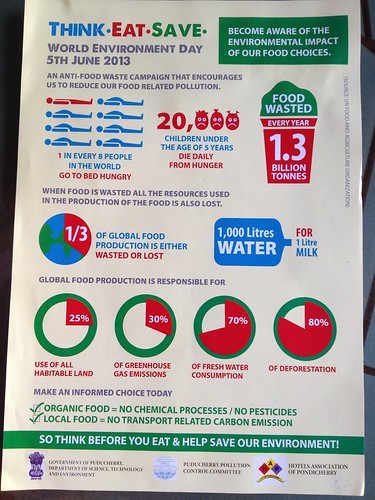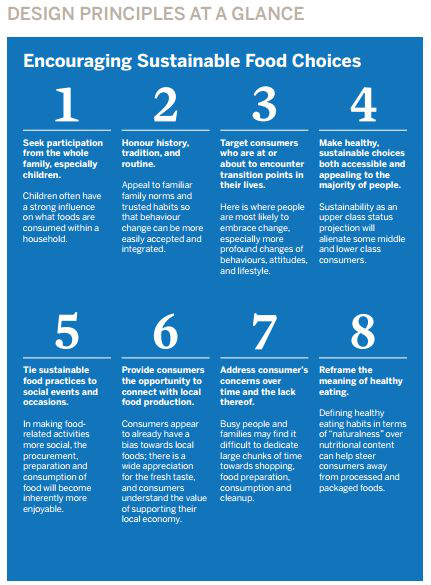From Deciphering to Designing
A few days ago, we stopped at our usual dosa pitstop for a quick breakfast. When the bill arrived, it came sitting on top of a little flyer that entreated us to "Think. Eat. Save."
It was World Environment Day this past Wednesday, June 5, and this year's theme prompts us to think about what it is we are eating at every meal, what resources we are consuming, and what environmental "foodprint" each bite, whether relished or wasted, can have. The facts and figures on food waste are particularly stunning. The average urban household in India wastes 100 kg of food per person; 20-40% of food produced locally spoils before it reaches consumers (this in spite of being a culture that typically abhors wasting food). Households in the UK waste 6.7 million tonnes of food a year, about a third of all food purchased. American families throw out about 25% of the food and drink they purchase, and about 40% of the country's food just simply gets wasted each year. And of course there are statistics aplenty pointing to just how many people who go hungry or suffer from malnutrition would be fed if waste on such monumental scale was being better controlled. The scale of the problem is breathtaking, as LeanPath.com avers in its excellent infographic on this issue.
It's deeply ironic, even tragic (but perhaps no coincidence), that global hunger and food excess go hand-in-hand.
Chewing on all this, I got to thinking about a couple of things.
First, about deciphering our meals for the stories they tell--about people and their histories, about globalization, about the journey of food from farm to plate. This follows the lead of cultural anthropologist Mary Douglas, who suggested in 1971 that the "meal" could be treated as patterned code for social relations. Read the code, and you'll get something of a peek into the way social hierarchies, boundaries, and categories are structured. What is a meal? How is it different from a snack? or drinks? Is a thick, hearty soup enough to constitute a meal--or is it the act of eating together that trumps what is actually on the table? With whom would you never share a meal--or settle for sharing drinks with? And so on, the idea being that you can "read" patterns of culture and identity through food.
So, question one: if you were to look at your plate the way it usually is constituted, and I mean really take a close look at it, what patterns would you find? What meanings, commitments, and ideas represented there?
I've written a little about this elsewhere, while deciphering a common South African meal, and tracing the history of maize meal-- unknown in Africa prior to the 1700s, of how it came from the Americas to become so central a part of diets in southern Africa in the form of mealie meal or mealie pap.
But my second thought is to push farther: what would it mean to go from deciphering a meal, to designing it? By itself, this thought is nothing new. Restaurant chains and Chefs alike have been designing culinary experiences with more or less performance for years. There's plenty of talk about intelligent packaging to help monitor freshness and increase shelf life, avoid refrigeration, and so on. And of course, we're accustomed to the idea of designing meal plans and customizing our food choices.
But if design is a process of innovative, problem-solving intervention by which existing conditions can be changed into preferred ones, and if the WED's challenge is as much to individuals as to nations, then the task is to learn to be designers all and to consider seriously what it really might mean to design our individual meals in ways that make them environmentally, socially, and physically wholesome.
I don't just mean buying organic or local, though that's clearly part of it. "If food is a code," asks Douglas, "where is the pre-coded message?" It's in our food categories and social relations, she answers. But what if we could more actively engage in culture-making--what if we could design that pre-coded message first, and have our eating follow logically from it? What design principles would be at stake?
I close with a set of design principles produced by a Canadian design innovation firm. These are targeted at those wanting/ in a position to modulate consumer behavior toward sustainable eating. But if it was just you, what would your design principles be? And what would you want those to say about your identity?





